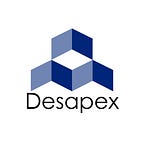Timely Incomplete Design Information Sharing and Communication:-
In traditional 2D CAD design, the different participants have to wait for each other’s design completion; the data deliverable are piled in silos before they can be exchanged between the design teams. In such a case, data can become obsolete, in other words, the data goes to waste. In contrast,
In BIM-based design, early and timely exchange of incomplete information between participants is enabled by sharing and integrating the building information models of the teams at any point in time.
This allows real-time design adjustments and development. The information is then always up-to-date, and the clear design intent visualization facilitates communication between players and allows for continuous information flow instead of interrupting the batch flow.
Idle Time:-
The BIM-based design phases clearly show the reduction in delays as opposed to the traditional design phases, since data sharing can occur even before the design is complete, there is little or no idle time for the different teams when waiting to receive complete data information from each other. Idle time is a large source of waste in design and is a critical factor to be eliminated to prevent delaying the design generation phase requested by the owner. Through the use of BIM, such idle times and unnecessary delays of waiting are minimized or eliminated.
Owner Involvement and Value Generation: -
BIM enables the involvement of the owner/owner’s representative and have him on board throughout the design progress by the ability to extract any design information when required from the integrated or individual models. In this respect, the owner’s early feedback is of high value as it eliminates the late decision on the design data which, if rejected, results in rework, cost, and time waste.
By involving the owner continuously as the design progresses, his value preposition will be properly translated throughout the project life cycle.
Iterative Loops and Rework:-
Iterative loops are a result of limited communication and information sharing. When data is shared in batches in an untimely fashion, it tends to go back and forth between the various design players in several loops before the design deliverable can exit the loop upon the acceptance of the architect and owner. When rejected, which is normal in design processes, the design deliverable has to be reworked. Since the deliverable is in 2D CAD, any adjustment of a certain concept or a drawing perspective has to be reflected in all other trades/disciplines and views. However, by using BIM, this can be done automatically by modifying the model once in one view and all the other views are automatically modified, and the other involved players can be instantly notified of the required adjustments on their behalf. This benefits the project by reducing negative iterations and rework, thus saving time and preventing cost overruns.
Quality of Design: -
Designers can make use of BIM to explore alternative concepts, conduct value engineering and optimize their designs.
BIM enables collaboration among the different participants and allows data input from everyone which generates a complete picture of the owner’s design intent in everyone’s mind.
In this regard, the architects and engineers will work towards a common design of higher quality instead of having segregated ideas and lost quality achievement along with the jumbled iterative traditional design phase.
Perquisites for Successful BIM Implementation:-
- Owner’s Information Requirement Capture
- BIM Execution Plan
- Multidisciplinary BIM Model Review and Development
- Clear articulation of BIM framework in RFP of General Contractor/Sub Contractors
- Robust BIM Change Management Framework
Reach us: sales@desapex.com
Follow us: Desapex
